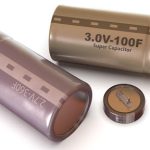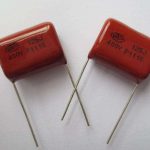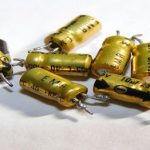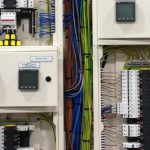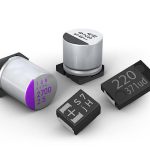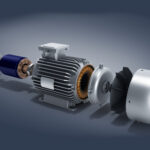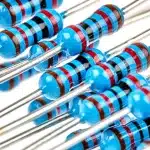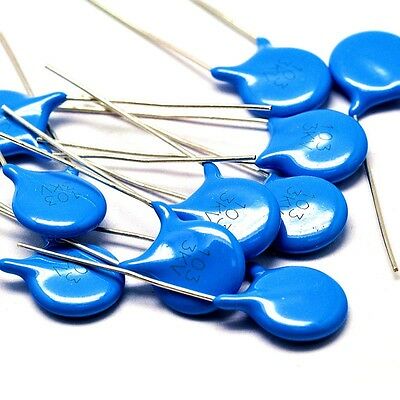
Ceramic capacitors are a common type of capacitors used in most electrical instruments because they are less costly and more reliable to manufacturers. These capacitors are mainly used where small compacts and more excellent charge storage are required. It is common knowledge that capacitors store electrical charge. The technique used by these capacitors to keep the electrical charge is the same; however, the material used to construct them might be different.
What are Ceramic Capacitors?
Ceramic Capacitors are capacitors with a fixed value, and the ceramic material is used as the dielectric within these capacitors. The capacitor features a more significant number of ceramic layers, including a metal layer that acts as an electrode. This capacitor’s electrical behavior and applications depend upon the composition of the ceramic material within the capacitor. Ceramic material is non-organic, non-metallic, and often crystalline oxide, carbide, nitride, etc. An example of ceramic material is carbon and silicon.
The polarity of Ceramic Capacitors
It is crucial to understand that the capacitor’s polarity is an essential factor that needs to be considered while connecting capacitors in an electrical circuit. There are two groups of capacitors depending upon their polarity:
- Polarized capacitor
- Non-polarized capacitor
In a polarized capacitor, there are two terminals identified as anode and cathode. These terminals are carefully paid attention to while connecting them in a circuit. Whereas in a non-polarized capacitor, only one terminal can perform both as a cathode and anode.
The ceramic capacitor is a non-polarized capacitor commonly utilized in electrical circuits and uses a ceramic material as its dielectric material. Non-polarity also indicates that the device does not have any polarity.
Types of Ceramic Capacitors
The two most commonly sued types of ceramic capacitors include the following:
Ceramic Disc Capacitors
Ceramic disc capacitors have some essential functions as they are often used as safety capacitor in most electromagnetic interference suppression applications.
Multi-Layered Ceramic Capacitors
Multi-layered ceramic capacitors are the most widely manufactured and used capacitor applied in electronic circuits. These capacitors are available in various sizes and shapes. They are utilized for RFI/EMI suppression systems, feed-through capacitors, and larger dimension systems as power capacitors in transmitters.
Ceramic capacitor usually developed in compact sizes and have maximum rated voltage. They are non-polarized and can be safely connected to an AC power source. Ceramic capacitor have low inductance and resistance, due to which they can deliver more excellent frequency responses.
Characteristics of Ceramic Capacitors
These capacitors have the following essential characteristics:
Accurate Tolerances and Precision
Ceramic capacitor are primarily required in applications used for high stability performances and devices exhibiting low losses. These devices are capable of providing high accuracy results, and the capacitance values provided are also stable due to the applied frequency, voltage, and temperature.
Small Size
For packaging, densities of high components required, and these capacitors offer significant advantages in terms of their small and compact sizes compared to other capacitors. Such as, a “0402” multi-layered ceramic capacitor measures around 0.4 mm x 0.2 mm.
High Power and High Voltage
Ceramic capacitor are manufactured effectively to withstand higher voltages and are termed power ceramic capacitor. These capacitors are more significant than Printed Circuit Boards. They also feature specialized terminals for safer connections for the high voltage supply. The power ceramic capacitor can withstand voltages that range from 2kV- to 100 kV.
Applications of Ceramic Capacitors
Ceramic capacitors are utilized for all types of circuits in many applications. however, we will mention the four main applications of ceramic capacitors that are:
Coupling
Ceramic Capacitors can transmit only AC components and extract AC components from AC+DC components. Coupling is the process of linking circuits with each other, and as the name indicates, coupling capacitors act as a bridge for connecting the circuits.
Decoupling
Decoupling capacitors effectively transfer the noise from the power source to the ground terminal. At the same time, it supplies a stable current to deal with sudden changes in load current on ICs and other circuits.
Smoothing
Smoothing capacitors effectively suppress ripples that created even after rectification with a power circuit to smooth out signals so that they can reach the direct currents.
When these Capacitors are installed after rectification, some excess voltage is stored in the capacitor during high voltage periods. Then it is vented during low-voltage periods, which gets rid of fluctuations in voltage.
Filtering
Filtering is an application that combines resistors to form filters and transmit signals only of a particular frequency.








